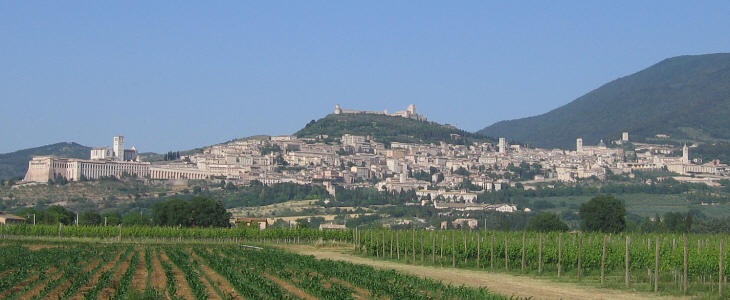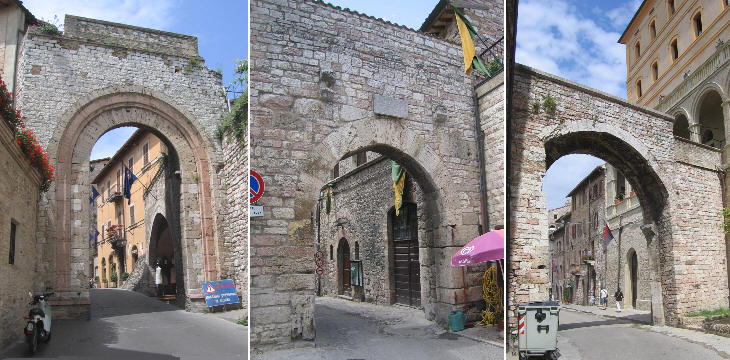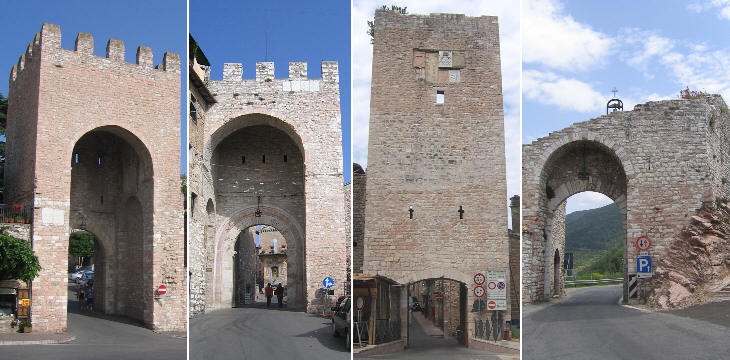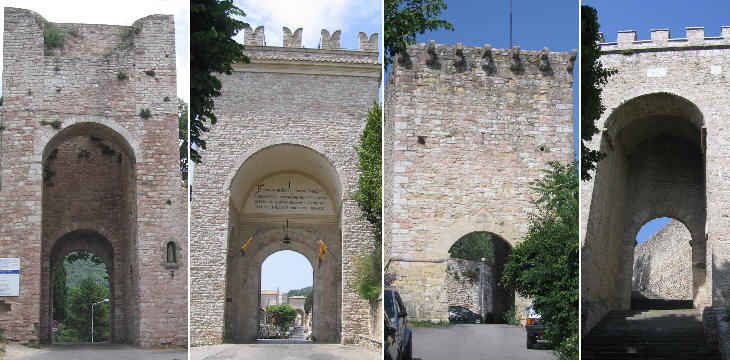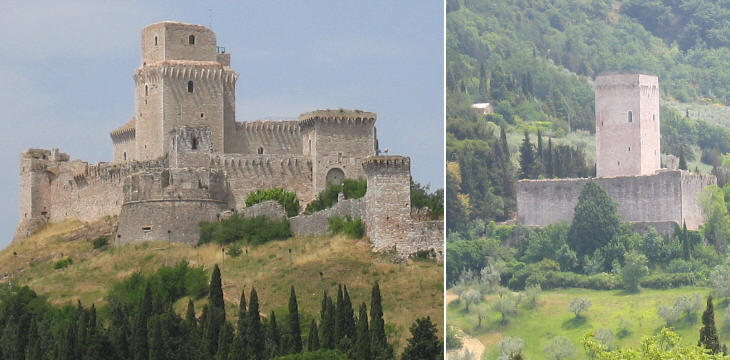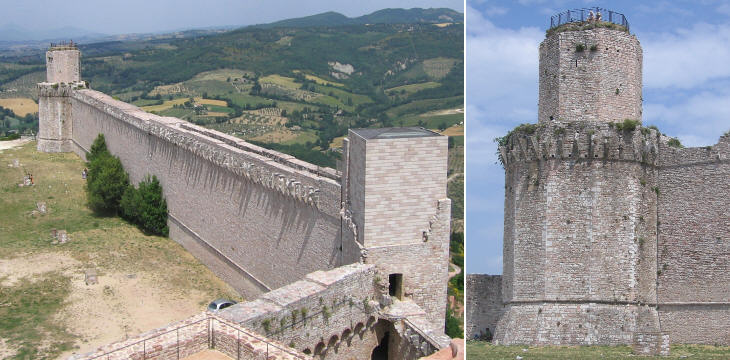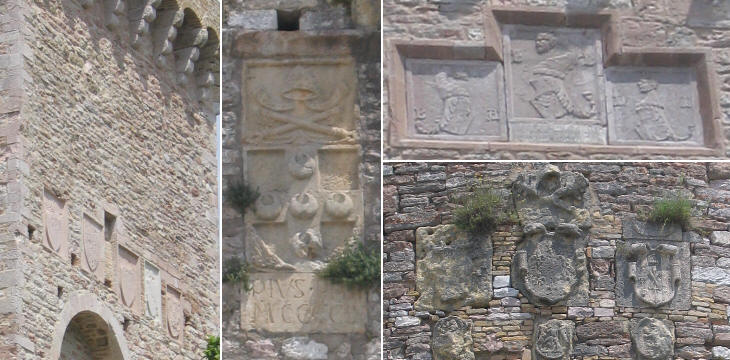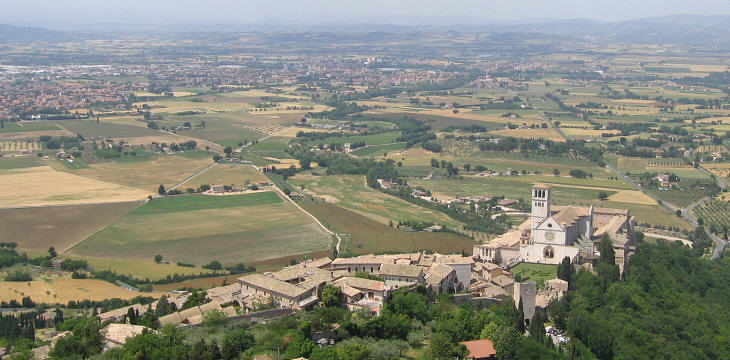  What's New! Detailed Sitemap All images © by Roberto Piperno, owner of the domain. Write to romapip@quipo.it. Text edited by Rosamie Moore. Page added in June 2007. |
Everyday a train leaves Termini at 8:14; first stop: Orte; second stop Narni; third stop Terni; fourth stop Spoleto; fifth stop Trevi; sixth stop Foligno; seventh stop Spello; eighth stop ... 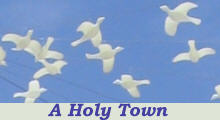 Assisi - part one: the fortifications Assisi - part one: the fortifications
The train leaves Spello and heads north; in a few minutes it reaches Assisi which is located on a hill at the northern edge of Monte Subasio.
The shape of Assisi was influenced in the XIIIth century by the construction of a very large basilica dedicated to St. Francis on the northern side of the hill (left side of the image) and by the construction of another one dedicated to St. Clare on the other part of the hill; the centre of the old town was located below an ancient fortress and over time Assisi expanded northwards and southwards towards the new buildings.
Assisi flourished in Roman times and for many centuries the area inside the ancient walls was large enough to contain its population; in 1316 new walls were built to include the boroughs near the Franciscan churches, but some gates of the old walls were not pulled down.
The new walls were built assuming that Assisi would have continued to grow as it had done in the previous century; the assumption however proved wrong because in 1348 the pestilence known as the Black Death halved the population of Assisi.
The new walls had eight gates which were all protected by a tall tower. The towers have a pink colour because they were built making use of a reddish stone, which can be seen in its natural state near Porta Perlici.
The fortifications of Assisi included two fortresses in addition to the walls: Rocca Maggiore at the top of the hill and Rocca Minore which strengthened the south-eastern corner of the walls. They were both built by Cardinal Gil de Albornoz around 1360 as part of his effort to restore papal authority in the region.
Between 1458 and 1460 a polygonal tower was built at some 300 ft from the main fortress and the two were linked by a fortified passage; the objective of this addition was to increase the defence of the side of the hill towards Perugia.
Coats of arms of popes and local lords were placed on various parts of Rocca Maggiore to celebrate additions and enhancements of the fortress.
Rocca Maggiore has commanding views over the main monuments of Assisi and the Umbrian Valley.
Move to part two: the development of the town. 
1864 clickable map of Umbria |
